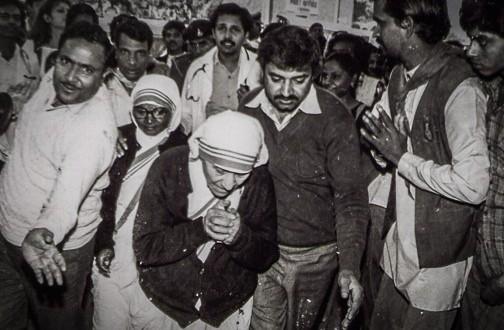Photo courtesy of The Bhopal Medical Appeal
On the 30th anniversary of the Bhopal Disaster, Gary Cohen reflects on what we've learned and how we can create a future that embraces our health and the environment. (Huffington Post)
The Sambhavna Clinic in Bhopal, India is an oasis of healing. Combining Western and traditional healing philosophies, the clinic empowers people to take responsibility for their own health. Clinic staff and patients maintain a healing garden where patients learn about the medicinal qualities of plants and then take home a plant to remedy some of their health problems. Satinath Sarangi, the clinic's director, says that "people take care of the plants and the plants take care of them."
All this, while sitting a quarter mile from the site of one of history's worst industrial disasters.
Just a short distance away is the rotting hulk of the Union Carbide pesticide factory. Thirty years ago the factory exploded, sending a poisonous cloud across a city of one million people as they slept in their beds. In one night of terror, thousands died and half a million people were injured.
Rightly called the "Hiroshima of the Chemical Industry", the abandoned factory still leaks poisons into the surrounding neighborhoods and children continue to be born with high levels of birth defects. Dow Chemical, the company that bought Union Carbide in 2001, claims it did not inherit Union Carbide's liability for Bhopal and refuses to clean up the Bhopal site or pay for any ongoing medical care for survivors.
I have travelled to Bhopal more than a dozen times since that day 30 years ago. First to work with community members to establish the healing clinic and later as part of a global movement to exact justice and relief from those responsible and ultimately perhaps draw some larger benefit out of the pain and suffering that so many Bhopalis still endure.
Justice has proved elusive to date. But anniversaries are an opportunity to look back on the journey and see what progress has been achieved, what lessons have been applied and where history seems poised, even determined, to repeat itself. And so, what have we learned?
Read full article here.
